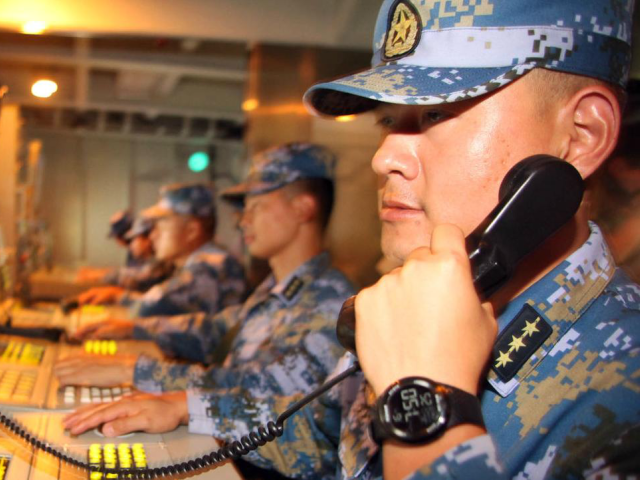The Philippines says China demonstrated “hostile intent” when it pointed a radar gun at a Philippine navy ship in February, Voice of America (VOA) reported on Wednesday.
In addition to the radar gun incident, China recently declared a section of Philippine-claimed territory to be part of its southernmost province of Hainan. The actions were “both violations of international law and Philippine sovereignty,” Philippine Foreign Secretary Teodoro Locsin said on Wednesday.
Locsin added that Manila sent Beijing two official diplomatic protests on Wednesday in response to the country’s belligerent actions in the South China Sea.
On February 17, a Chinese warship pointed its “fire control radar” at a Philippine navy ship off of Rizal Reef in the Spratly Island chain in the West Philippine Sea, the Western Command Armed Forces of the Philippines (WESCOM) said in a statement on Wednesday.
The West Philippine Sea is the Philippines’ exclusive economic zone in the South China Sea, which China unlawfully claims almost entirely.
A Philippine official told the Associated Press on Wednesday that although the Chinese ship did not fire at the Philippine ship, its action was “very hostile” and “unprovoked.” The radar gun used by China locks weapons on a target prior to an actual attack, the official added.
On Wednesday, ahead of a virtual meeting between the United States and the Association of Southeast Asian Nations (ASEAN) held the same day, U.S. Secretary of State Mike Pompeo condemned China’s increasing aggression in the South China Sea in recent weeks.
“The United States strongly opposes China’s bullying. We’ve also seen that the Chinese Communist Party is exerting military pressure on Taiwan and coercing its neighbors in the South China Sea, even going so far as to sink a Vietnamese fishing vessel. We hope other nations will hold them to account,” Pompeo said.
On April 19, Vietnam accused China of violating its sovereignty shortly after the country declared it had set up two new administrative districts to govern Vietnam’s Paracel Islands and the Philippines’ Spratly Islands. China also said it had renamed 80 geographical features in these island chains.
On April 8, the Philippines expressed support for Vietnam after the country protested the ramming and sinking of a Vietnamese fishing boat by a Chinese coast guard ship in waters near Vietnam’s Paracel Islands on April 3.
The U.S. said the incident served as evidence that China has been taking advantage of the world’s focus on the coronavirus pandemic to increase its power grab in the disputed waterway. On April 6, the U.S. told China to “stop exploiting the distraction or vulnerability of other states to expand its unlawful claims in the South China Sea.”
Over the past few years, and especially in recent months, China has stepped up its efforts to control the resource-rich and strategically important South China Sea. China claims maritime zones governed by Southeast Asian nations such as the Philippines and Vietnam, as well as Malaysia, Taiwan, and Brunei.
According to a 2016 international court ruling, the communist nation’s maritime claims in the waterway are unlawful. China dismisses this decision and continues to assert power over almost the entire South China Sea.

COMMENTS
Please let us know if you're having issues with commenting.